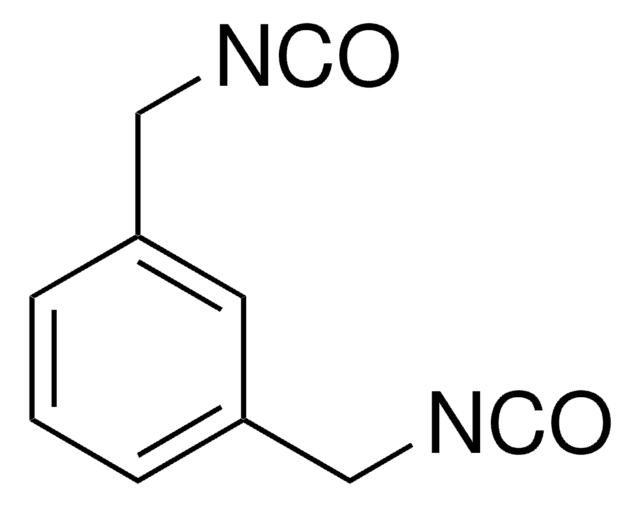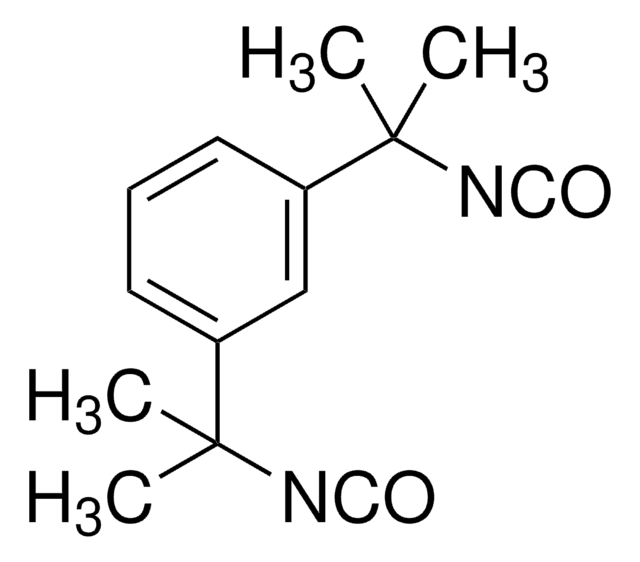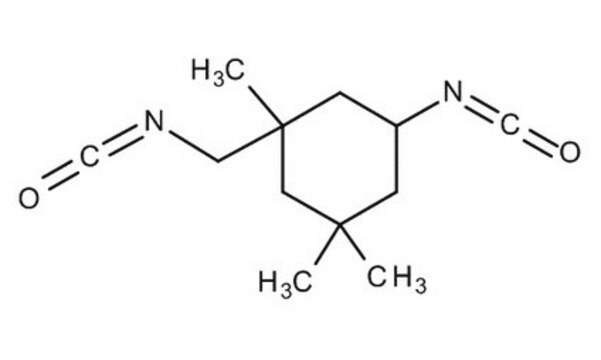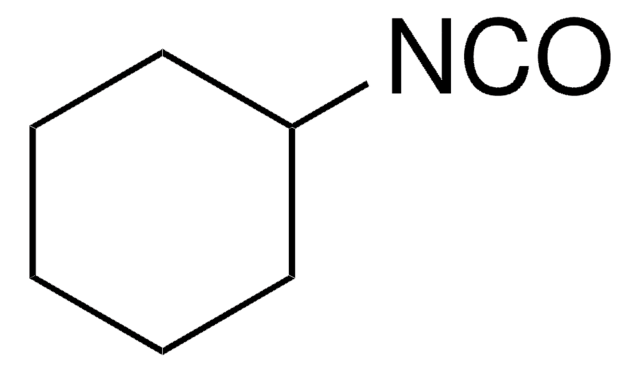405949
1,3-Bis(isocyanatomethyl)cyclohexane
mixture of cis and trans, 99%
Synonyme(s) :
1,3-Bis(methylisocyanate)cyclohexane, Hydrogenated m -xylylene diisocyanate
About This Item
Produits recommandés
Pression de vapeur
0.4 mmHg ( 98 °C)
Niveau de qualité
Essai
99%
Forme
liquid
Indice de réfraction
n20/D 1.485 (lit.)
Densité
1.101 g/mL at 25 °C (lit.)
Chaîne SMILES
O=C=NCC1CCCC(CN=C=O)C1
InChI
1S/C10H14N2O2/c13-7-11-5-9-2-1-3-10(4-9)6-12-8-14/h9-10H,1-6H2
Clé InChI
XSCLFFBWRKTMTE-UHFFFAOYSA-N
Catégories apparentées
Description générale
Application
- As a precursor to synthesize pressure sensitive adhesives with strong adhesive strength and rapid strain recovery. These adhesives with high optical transmittance can be used in foldable displays, medical devices, and wearable electronics.
- As a cross linking agent to prepare gel polymer electrolyte for Li-ion batteries using UV curing.
- To fabricate niche-mimicking polymer hydrogels to identify molecular targets for treatment of pancreatic cancer.
Mention d'avertissement
Danger
Mentions de danger
Classification des risques
Acute Tox. 2 Inhalation - Acute Tox. 4 Oral - Aquatic Chronic 4 - Eye Dam. 1 - Resp. Sens. 1 - Skin Corr. 1C - Skin Sens. 1A
Code de la classe de stockage
6.1A - Combustible acute toxic Cat. 1 and 2 / very toxic hazardous materials
Classe de danger pour l'eau (WGK)
WGK 3
Point d'éclair (°F)
235.4 °F - closed cup
Point d'éclair (°C)
113 °C - closed cup
Équipement de protection individuelle
Eyeshields, Faceshields, Gloves, type ABEK (EN14387) respirator filter
Faites votre choix parmi les versions les plus récentes :
Déjà en possession de ce produit ?
Retrouvez la documentation relative aux produits que vous avez récemment achetés dans la Bibliothèque de documents.
Les clients ont également consulté
Global Trade Item Number
| Référence | GTIN |
|---|---|
| 405949-100ML | |
| 405949-500ML | 4061838146441 |
Notre équipe de scientifiques dispose d'une expérience dans tous les secteurs de la recherche, notamment en sciences de la vie, science des matériaux, synthèse chimique, chromatographie, analyse et dans de nombreux autres domaines..
Contacter notre Service technique














